What's New
Displaying results 1841 - 1850 of 4052
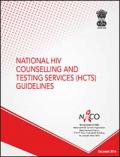
Resource | Publications,
During 2014-15, the National AIDS Control Programme (NACP) in collaboration with the National Reproductive and Child Health Programme has included screening for HIV and syphilis in the essential package of ante-natal care services for all pregnant women. This will enable India to eliminate both HIV and syphilis in the new born.
Early testing and diagnosis, on a voluntary basis, is the gateway to HIV prevention, treatment, care and other support services. The challenge is to increase access to and uptake of HIV testing among priority populations. This warrants different innovative strategic approaches suitable for implementation across different states and union territories of India.
The present 'National HIV Counselling and Testing Services Guidelines 2016' provides extensive details on the different strategic approaches with implementation plan to scale up the reach and coverage of services to priority populations.
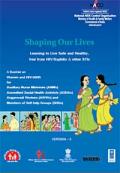
Resource | Tools,
The booklet has been designed to facilitate the work of Midwives (ANMs), Accredited Social Health Activists (ASHAs), Anganwadi Workers (AWWs) and the Self-Help Groups (SHGs) members who are working as front-line workers in the area of reproductive health, nutrition, empowerment and poverty alleviation programmes.
Though the booklet takes inspiration from various existing IEC materials, yet it provides a new insight into how HIV and AIDS impact women and their conditions. Consultations with different programme managers and civil society groups have helped in transforming the technical know-how into a simple step-by-step guide. The use of easy to understand language, interspersed with illustrations, enhances acceptability of messages and their use among women in villages.
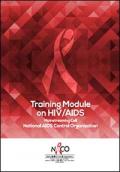
Resource | Tools,
HIV/AIDS is not a mere health issue as its occurrence is influenced by a number of socio-economic elements. Health interventions alone, therefore, cannot lead to prevention. HIV prevention requires a concerted collaborative effort from all departments, institutions or organizations in public life through their work and programmes.
Mainstreaming approaches to HIV have increasingly gained ground with the realization that the non-health sector can play an important and meaningful role in reducing vulnerability to HIV and mitigating its impact on those infected and affected. Though HIV is preventable, currently there is no cure for it. It can be best described as “a manageable condition”. In this scenario, mainstreaming and partnership for risk reduction, social protection, access to service and stigma reduction, become key policy tools to help communities become resilient and cope better.
This guide is part of effort to enhance participant’s understanding on issue of HIV and AIDS and strengthen institutional capacity to reduce vulnerability, integration of services and social protection for People Living with HIV and Most at risk population.
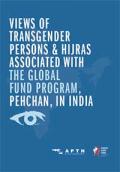
Resource | Publications,
The report is based on interviews of 30 transgender persons and hijras across India who worked with or are clients of Pehchan, and it captures the human stories explaining personal struggles in claiming of identity.
Almost all participants expressed that the Pehchan program provided them a crucial platform for leadership and employment even if the work under the Global Fund was quite painstaking, involving excessive documentation and reporting. Community members expressed that Pehchan resulted an increase in visibility of TGH issues separate from men who have sex with men (MSM). A positive change were noticed in the mindset of stakeholders for communities in smaller districts that were mobilised.
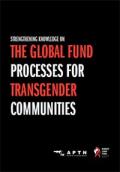
Resource | Publications,
Between 2000 and 2001, a new fund was conceived by the G8 (informal forum of the Great Powers) because existing aid programs for HIV/AIDS, tuberculosis, and malaria were viewed as inadequate and incapable of scaling up quickly enough to meet pressing disease burdens and deaths (especially deaths related to HIV and AIDS). The purpose of the Global Fund is "to attract, manage, disburse additional resources through a new public-private partnership that will make sustainable and significant contribution to the reduction of infections, illness and death, thereby mitigating the impact caused by HIV/AIDS, tuberculosis and malaria in countries in need, and contributing to poverty reduction as part of the Millennium Development Goals" (Global Fund 2002).
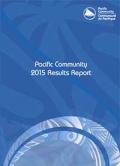
Resource | Publications,
The Pacific Community 2015 Results Report provides an overview of the positive changes achieved by Pacific Community members through SPC’s technical, scientific, research, policy and training services. It is the final report against the 2013–2015 Corporate Strategic Plan and associated results framework, and the strategic objectives set for the three-year period ending December 2015.
Our results are reported according to our three development goals and 15 development objectives. Performance against contributions to the objectives is described using 48 Key Result Area performance stories.
In addition, the results framework annexed to the report includes 56 performance indicators measuring development effectiveness and 19 performance indicators measuring organisational effectiveness.
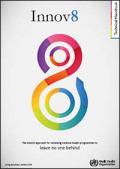
Resource | Tools,
“Leave no one behind” is a core principle of the Sustainable Development Goals (SDGs). Equity, human rights and gender equality are central to all the goals, while SDG 3 calls for universal health coverage and health and well-being for all at all ages. To realize this inclusive vision, we have to ensure that everyone makes it on to the bus of the SDGs – by using new approaches and tools that help us identify, and then address, health inequity.
The eight-step Innov8 review is undertaken in each country by a multidisciplinary national team. It identifies who is being missed by health programmes, the barriers they face and the reasons those barriers exist – including the social determinants of health. It recommends the monitoring activity, partnerships and coordinated intersectoral action needed to ensure that health programmes reach everyone, especially those who have been missed and overlooked in the past.
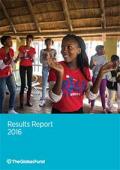
Resource | Publications,
The Global Fund partnership brings together a myriad of strengths: finances; technical expertise; the experience and knowledge of communities affected by HIV, tuberculosis and malaria; innovation; and a capacity for constant evolution. The partners who comprise the Global Fund come with diverse abilities and points of view, yet they share a determination to serve people, to strive for social justice, and to achieve impact against HIV, TB and malaria and ultimately end the epidemics.
This report delivers a summary of the impact and results achieved by end 2015 by programs supported by the Global Fund, showing cumulative progress since 2002. It is a collective effort, combining the strong contributions made by governments, civil society, the private sector and people affected by HIV, TB and malaria.
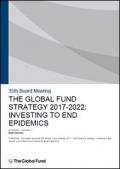
Resource | Publications,
The Global Fund Strategy 2017-2022, Investing to End Epidemics, was developed under the leadership of the Board of the Global Fund, with contributions from numerous partners and stakeholders who share common goals in global health. Over a two-year period, in 2014 and 2015, the Board’s Strategy, Investment and Impact Committee led a broadly consultative process to collect the strongest ideas, perspective and guidance to formulate the Strategy. The consultations included three regional Partnership Forums with over 300 participants from 128 countries, a 12-week consultation with over 1,200 participants from 143 countries, and dozens of focused meetings and consultations on specific aspects of the next Strategy. The Strategy development process captured the expertise, diversity, and innovative spirit of the Global Fund Board, and integrated broader views and experience of partners.
This paper presents the Global Fund Strategy 2017 - 2022 that the Strategy, Investment and Impact Committee recommends for Board approval.
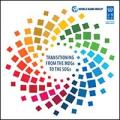
Resource | Publications,
Many countries mainstreamed the Millennium Development Goals (MDGs) into their national and sub-national development plans and strategies, and implemented specific measures intended to achieve the associated targets. However, progress was uneven and, in spite of best efforts, many countries missed one or more of the MDG targets.
During the last three years of the MDG period, heightened efforts were made at accelerating progress. Acceleration efforts were expected to shorten the amount of time to completion and offer significant benefits to the implementation phase of the Sustainable Development Goals (SDGs). Much has been learned through efforts of the last fifteen years, and there is enough evidence to guide such efforts. This report documents the experience of 16 countries and the Pacific Islands sub-region with acceleration efforts.





